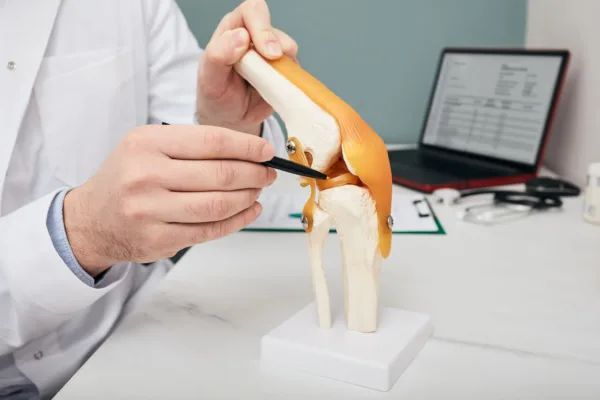A torn meniscus is one of the most common knee injuries, affecting athletes and non-athletes. Managing a meniscus tear through either repair or removal can help relieve pain and preserve knee function. Choosing the right path requires understanding the nature of your tear and treatment options. This guide will help you navigate your options.

Understanding the Meniscus and Types of Tears
The meniscus is a C-shaped piece of cartilage in each knee, positioned between the thighbone and shinbone to act as a shock absorber. This cartilage plays a crucial role in stabilizing the knee joint and protecting bone surfaces. A meniscus tear can occur in various patterns, requiring different treatment considerations. Doctors classify meniscus tears by shape and location in the knee, with common types including:
- Bucket Handle: A large tear that folds into the knee joint, often locking the knee.
- Flap: A small tear that catches in the joint, restricting movement.
- Radial: A tear originating at the inner edge, affecting the meniscus’s stability.
What Causes a Meniscus Tear?
Meniscus tears are typically caused by either sudden injury or gradual degeneration. Factors contributing to these tears include:
- Sudden (Acute) Tears: These tears often result from sports or activities that involve twisting or deep squatting. They are common among young athletes and occur when the knee is turned or twisted sharply.
- Wear-and-Tear (Degenerative) Tears: Aging weakens knee cartilage, making it more prone to tears from simple movements, such as standing or slight twists. Degenerative tears are frequently seen in older adults and may require distinct treatment from acute injuries.
Signs of a Meniscus Tear
 Recognizing a meniscus tear can help prompt timely treatment, minimizing long-term knee complications. Common signs include:
Recognizing a meniscus tear can help prompt timely treatment, minimizing long-term knee complications. Common signs include:
- Pain localized on either side of the knee
- Swelling that develops over days
- Catching or clicking sensation with movement
- Limited knee mobility
- Weakness or instability in the knee
Many people continue to walk after a meniscus tear, often noticing a “pop” sound at the moment of injury. However, without treatment, loose pieces of the torn meniscus can slip into the joint space, worsening symptoms.
Treatment Options: Repair or Removal
Treatment for a meniscus tear depends on the tear’s location, severity, and the patient’s lifestyle. There are two primary options for managing meniscus tears:
Meniscus Repair
Meniscus repair aims to heal the torn cartilage, which is often feasible if the tear occurs in a vascular area where blood supply can aid healing. This method may be ideal for:
- Young, active individuals
- Tears in the outer meniscus area
- Recently sustained tears
During meniscus repair surgery, the surgeon uses small incisions to suture the tear. Recovery requires several months and typically involves:
- Physical therapy to regain mobility and strength
- Limited knee movement initially
- A gradual return to physical activities
Meniscus Removal (Partial Meniscectomy)
In cases where the tear cannot be effectively repaired, partial meniscectomy—removal of the damaged section of the meniscus—may be recommended. This approach is often better suited for:
- Tears in areas with limited blood flow
- Complex tears unsuitable for repair
- Patients needing a quicker recovery
- Degenerative or worn tissue
The surgeon removes only the torn portion of the meniscus through small incisions, allowing for a faster recovery. Physical therapy generally begins a few weeks after surgery to support healing and restore function.
Rehabilitation After Meniscus Surgery
 Rehabilitation is crucial in restoring knee function following meniscus surgery, whether through repair or partial removal. The process begins with a tailored physical therapy plan designed to improve the knee’s strength, flexibility, and stability. For patients who undergo meniscus repair, initial movement is often limited to allow proper healing, followed by gradual exercises to restore mobility.
Rehabilitation is crucial in restoring knee function following meniscus surgery, whether through repair or partial removal. The process begins with a tailored physical therapy plan designed to improve the knee’s strength, flexibility, and stability. For patients who undergo meniscus repair, initial movement is often limited to allow proper healing, followed by gradual exercises to restore mobility.
Those who opt for meniscus removal typically start physical therapy sooner, focusing on controlled movements and strengthening exercises. With consistent rehabilitation, patients can expect a gradual return to daily activities and, ultimately, a reduction in pain and improved knee stability. A comprehensive rehabilitation plan helps protect long-term knee health, reducing the risk of re-injury and promoting lasting mobility.
Choosing Your Treatment Path
Deciding on meniscus repair or removal depends on age, activity level, and type of tear. Consulting a knee specialist is essential for choosing the best treatment based on:
- Tea the following location
- Tear complexity
- Activity and lifestyle goals
- Overall knee health
With proper treatment and rehabilitation, most patients experience pain reduction and knee stability improvement. If you’re facing a meniscus tear and need to decide between repair and removal, schedule a consultation with Louisville Hip and Knee Institute specialists. They can assess your condition and develop a treatment plan that suits your needs.

